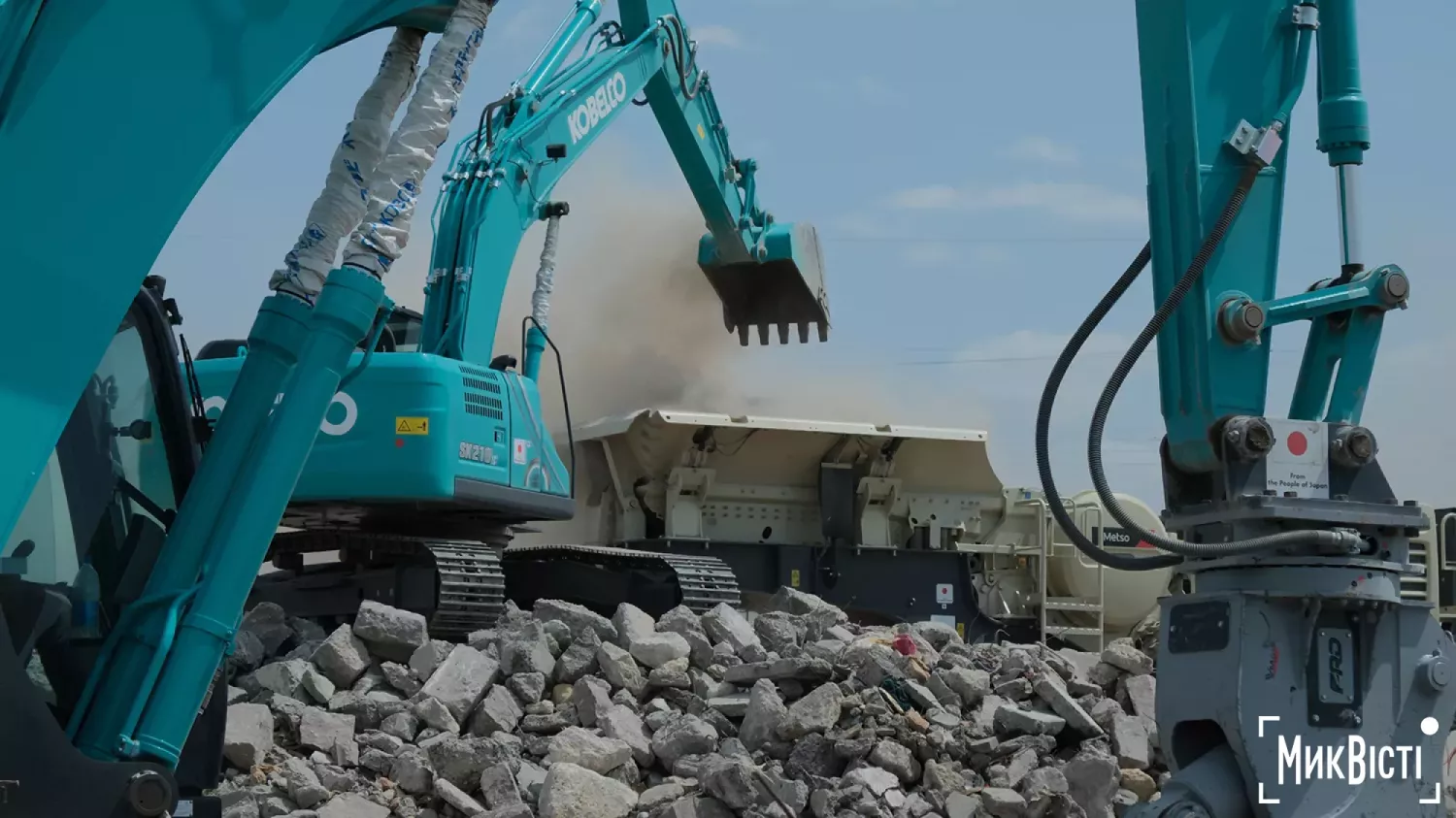City authorities plan to launch production of building materials from recycled demolition waste in Mykolaiv
- Yuliia Boichenko
-
•
-
9:00, 31 July, 2025
In Mykolaiv, the city authorities are going to launch the production of building materials that will be processed from demolition waste and used to repair the city's infrastructure.
This was announced by the mayor of Mykolaiv, Oleksandr Sienkevych, during a press conference on 30 July, according to NikVesti.
He reminded that the city currently has a plant for processing construction waste from damaged buildings. To date, 3,692 tonnes of debris have been processed, the mayor added.
«This debris is being processed into crushed stone and screenings and can be used, for example, in road paving and building materials,» said Oleksandr Sienkevych.
The mayor also said that the city plans to recycle demolition waste into construction materials: elements of stormwater systems, cinder blocks, pressed bricks.
«Together with our partners, we are planning to launch our own production of building materials. These are elements of stormwater systems, cinder blocks, and pressed bricks that we can use to repair urban infrastructure. This is a good example of a circular economy, where construction waste is recycled and reused,» said Oleksandr Sienkevych.
He also added that he hopes to report on the results of this work by the end of 2025.
«I am grateful to our partners. We have already applied for additional equipment and capacity. I hope that by the end of the year I will be able to report on the expansion of this work,» said Oleksandr Sienkevych.
In the summer of 2025, a new plant for recycling construction waste from buildings damaged during the shelling of the city was launched in Mykolaiv. In particular, the plant will be used for the needs of two other regions: Kherson and part of Kirovohrad.
Waste of destruction in Mykolaiv region
As of the end of 2023, Mykolaiv region is among the six regions most heavily contaminated with demolition waste: it covers an area of more than half a million square metres. Currently, some of this waste is stored at landfills, while others are still at the sites of destruction. This is harmful to the environment of the region: the destruction waste pollutes water, soil, and air. This raises the issue of their professional disposal and recycling to rebuild the region, as described in the article NikVesti «Raising from the ruins: How is Mykolaiv region going to get rid of destruction waste?»
As of the end of November 2023, 57 hectares of the territory of Mykolaiv region were littered with construction waste caused by shelling. At the same time, the Department of Housing and Communal Services of Mykolaiv reported that by the end of 2023, the city should receive a special installation for shredding demolition waste.
In 2023, five temporary storage sites for demolition waste were identified in Mykolaiv region.
Plans to build a plant in Mykolaiv Oblast to recycle construction waste generated by enemy shelling were announced two years ago, in the summer of 2023. The plant was supposed to process construction waste from two regions: Mykolaiv and Kherson. This was stated by the head of the Shevchenkove community, Oleh Pylypenko. And the Shevchenkove community wants to deal with the disposal of hazardous demolition waste containing asbestos.
In particular, it was reported that the Japanese international cooperation agency JICA plans to build a solid waste recycling plant in Mykolaiv, having donated construction waste processing equipment worth about €5 million to the city. The project to build a construction waste recycling plant in Mykolaiv was expected to start in early 2025, with staff training to begin in autumn.
As of 1 July 2024, almost 6,000 tonnes of construction waste was generated in Mykolaiv region due to Russian shelling.
Read also the article NikVesti «Eco-rebuilding of the South: where does the waste of destruction go and why is Kharkiv's example useful».
